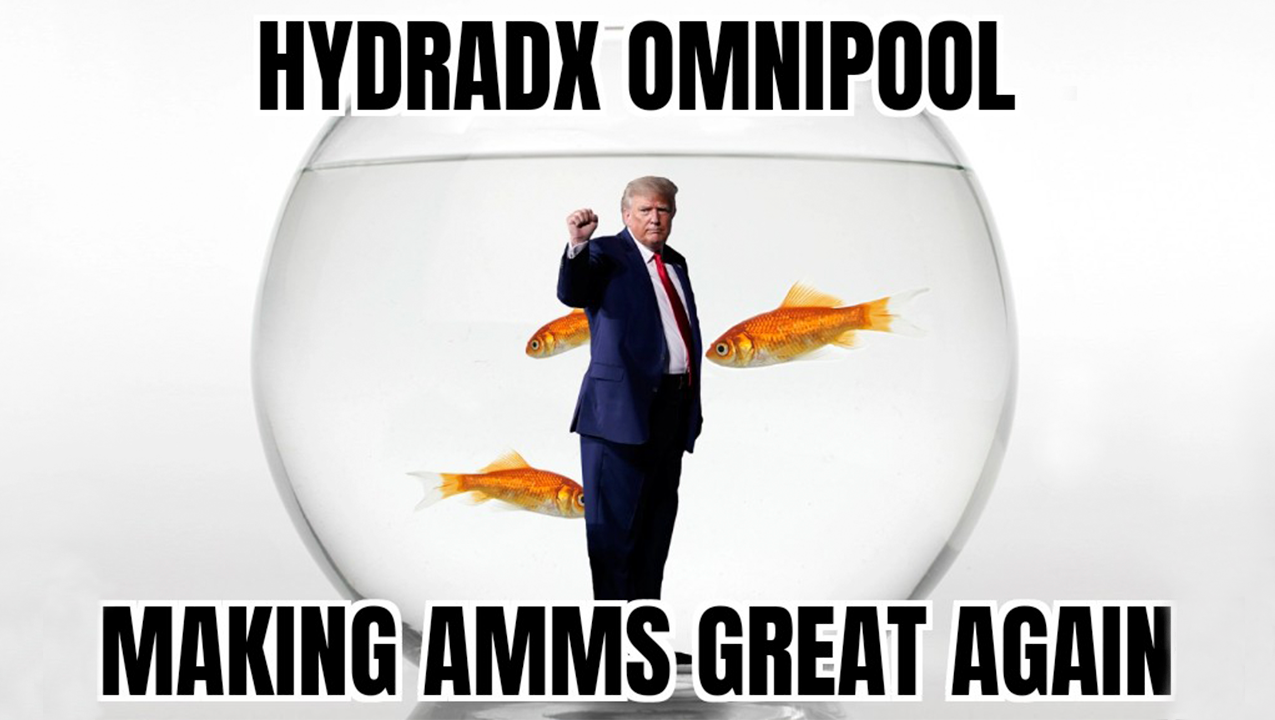Decentralization is a buzzword. It sounds cool. The fact of the matter is that not many have dared to effectively go beyond the marketing. Much of our decentralized world is largely centralized. And now, as it has become apparent that crypto is not a mere toy, decentralization is a must - not a perk.
Regulatory scrutiny is one thing. The other is that you can only delay decentralization to an extent before everyone sees through the sham. So we’re asking: Where is the decentralization they had promised us? When will Vitalik finally give up his masternode key?! (lol)
Many already sense that more often than not “decentralization” is a sham. It laregely remains a vague vision for the most. Some folks in the industry don't really care. The more traction we as a project have received, the more we became aware of it.
Short Story Time
After an extremely successful HDX LBP, a couple of big name investors have reached out to us and inquired about the possibility of investing in a potential next round. Some investors were asking about a possible side deal even before the LBP. The conversations went something like this (some artistic freedom granted):
Big Shot: “We’re big shot investors and there must be some tokens on the side. Can you give us some allo?”
Us: “Uhmm, there are no side-deals and no tokens on the side. But we’d be happy if you would participate in the LBP.”
Big Shot: “Nah thanks, I’m not pleb.”
The FOMO after the LBP intensified. Some investors made proclamations about how much they would invest in the next round. Many had reached out, and some were asking for side deals. The frequent inquiries made us wonder whether side deals had not become an industry-wide standard at that point.
We disregarded the whole thing and continued building even though the teams around us were raising multiple rounds before actually having written a single line of code. But we did not let this distract us. We dedicated our time to tech and the product. Ever since the HDX LBP we have… :
-
joined the Rococo testnet as a parachain in the first batch
-
become 3rd project to do a token transfer on Rococo
-
migrated the ERC20 xHDX tokens to our native Substrate chain
-
enabled Staking (165 validators) and kicked off the Incentivized Testnet (Snakenet)
-
joined the DeFi Alliance
-
hired more engineers and a head of research
-
designed Basilisk, a Kusama-focused product
-
built the underlying tech that allowed us to register Basilisk as a Kusama parachain
-
advanced in building products on Basilisk (LBP, NFT etc.)
But as we were building and planning to go fully decentralized, we were also thinking about fundraising. Mind you, we have raised only a small seed and are running the operation on a shoestring budget so, naturally, seeing our peers raise big rounds was a nudge.
We were paying attention during the $SUSHI drama of “predatory investors versus the community”. After the community was defiled by a former backer, the anti-investor mood in the space became apparent. We therefore decided to hold off on fundraising, and only do so after consulting the community.
But during this whole time we kept thinking about HydraDX and Basilisk, about the future and about the killer product. Looking at great companies, we came to realize that building a super-successful network required us to hang around at least for a decade, that is; we are building more than a mere “novel DEX”.
We know we’re onto something great and we have to make sure we do everything to succeed. And the question kept coming back: What is the product? How to keep delivering a series of KILLER products, going long into the future?
We realized that the answer was in front of our eyes all along. Today, as we stand at the verge of entering a new crypto digital age in which the most important product becomes a membership to an online tribe.
The future is TRIBE.
Launching Tribe Coordination (aka Governance)
Although we have primarily set out to deliver a cross-chain DEX with a novel Omnipool design which addresses the liquidity fragmentation challenge, we have realized this is only part of our mission, and likely one of many products and features to be built on HydraDX and Basilisk.
We are not in the business of exchange operators or selling tokens. We are in the business of offering a tribe membership. What does a tribe membership give you, beyond a sense of belonging?
The answer is: Access to tribe coordination (aka g-word) which enables anyone to participate in deciding the future of products that the tribe is building.
Make no mistake, we are still building primarily towards novel cross-chain DeFi use cases on Polkadot and Kusama, but we see the potential of HydraDX and Basilisk becoming much more than that.
In our vision, these projects should naturally evolve into separate novel socio-economic organizations - an online tribe, a DAO, a sovereign and fluid self-governing entity living on the web. To achieve this, self-governance is a must.
What crypto does is novel. We have users before we have a product. We have a community before we have a product-market fit (PMF). There is already a small tribe of Hydraheads - we have network stakeholders, builders, fans, community managers, but they do not effectively control the network.
We - the founding team behind HydraDX and Basilisk, simply cannot and don’t want to make decisions ourselves if we are primarily building a tribe. Obviously, a tribe should be organized with every member having his or her place and a way of contributing. The decisions should be made together - as a tribe.
The team is currently building and perfecting two networks and products on top of it. We have made it our mission to facilitate a way for this tribe to flourish, become sovereign and help us iterate towards building the best versions of these products.
The goal was never to build a corporation. And the goal was never to found a startup either. Startups are great but perhaps they are better for a lean and very focused product approach - the standard Silicon Valley type.
To achieve massive success in revolutionizing finance, we need to think about coordination beyond the confined boundaries of a startup. We need to design a tribe coordination tool which allows us to manage internal and external resources. How does a tribe come into existence and what makes it thrive?
The three main pillars of a crypto tribe are tech, memes and liquidity. We can call this the Triad.
To form a tribe, you need to have a basis upon which the tribe can be founded. The foundational pillar is the tech - the promise and realization of a future product or a service. Then come the memes - as a way of packaging and distributing information about the product in an accessible manner. The Triad is completed with liquidity, which breathes life into the other two pillars.
Within the Triad, there should be fluidity that creates a reflexive loop, bootstrapping the crypto tribe. This is the new way to create, ideate and pivot a product in an online world. The tribe pursues a PMF just like a startup does, but it does so on a larger scale, with the ambition to conquer other tribes while perfecting it.
We need you to help us build the tech, provide liquidity and create memes. We need these things to flow into each other. By allowing you to govern, we want to make the tribe functional, allowing us to iterate on the future of HydraDX and Basilisk together.
Come for the tendies, stay for the tribe
The motivation to join the crypto tribe could be a financial gain, but many stay in the tribe because of the sense of belonging. Financial freedom is great, but freedom does not necessarily lead to fulfilment. A purpose does. A bunch of motivated and financially free individuals driven by a purpose is an extremely potent socioeconomic phenomenon.
“Come for the tool, stay for the network” was the hallmark of the Web 2.0 era. Today, standing at the brink of Web 3.0, we might as well say “Come for the tendies, stay for the tribe”. [1]
A smart Aleck would immediately offer a rebuttal: What’s the difference between a tribe and a network? A tribe is a form of a network. There are different types of networks and different ways of how these networks emerge into life.
In this context, a tribe should be understood as a group of persons having a common character, occupation, or interest. Most definitions of tribe refer to a network of people that share a belief system or some other form of a common sense of belonging.
The network refers to a wider social graph that is attached to traditional Web 2 social networks like Facebook, Instagram or Twitter. Web 2 has provided a globalized infrastructure from which a general social graph has emerged. Web 3 will enable a secession of different tribes.
Finally, “come for the tendies” is a reference to the economic motivation of pseudonymous tribes. Especially in crypto, where tribes effectively operate their own “banks”, tendies are important and are mostly embodied in tokens. Tokens formalize alliances and align tribes’ incentives.
In a Web 2 era, a startup composed of founders, investors and employees (sometimes) would deliver a product that would then be extended towards users who connect through the product. Today, the lines between founders, investors, employees and users become blurry. Today, there are only tribesmen and common culture.
Soon there will be formal or informal governance and an emerging independent economy. Some tribes will be friendly, some neutral and others will be unfriendly or hostile. Tribes are here to build a new America, to find a joint purpose and iterate together.
Not startups or nation states, but online tribes are the future. One day, these tribes will fund nuclear fusion research, buy land from nation states and venture onto a journey to Alpha Centauri. But back to Earth…
HydraDX will initialize decentralization soon, allowing us to start building squad wealth. We’ll share details about decentralization process in the next couple of days.
Stay tuned.
Footnotes
[1] TENDIES means "Financial gain on the stock market." Tendies is a term used by traders on Reddit's Wall Street Bets (WSB) to describe money or any financial gain. Tendies is short for chicken tenders.






